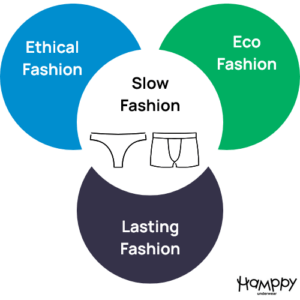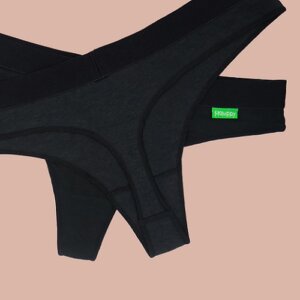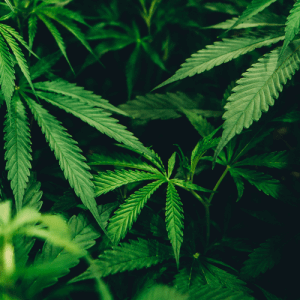Every day, perhaps even every hour or minute, we commit ourselves to sustainability and innovation in every step of our process. However, like many in the fashion industry, we face the ongoing challenge of balancing our environmental goals with practical realities. One of those challenges is our use of polybags.
What are polybags, and why are they used?
Polybags are simple, transparent plastic bags that protect clothing and underwear during transport. While they might seem like a small part of the process, they play a crucial role. These bags, usually made of polyethylene or polypropylene, serve several important functions:
- Protection: From the moment your Hamppy underwear leaves our production facility, it embarks on a long journey—often across continents. Polybags protect our products from dirt, moisture, and other elements that could affect their quality. Without this protection, entire shipments could be lost, leading to enormous waste of resources.
- Transport Efficiency: Polybags are lightweight and take up minimal space, which is essential for keeping transportation costs—and the ecological footprint—low. They're also tear-resistant, ensuring your underwear arrives in perfect condition.
- Transparency and Information: The transparent nature of polybags allows for easy product identification and quick label checks, streamlining supply chain processes and minimizing errors.
Did you know that almost all clothing is shipped in plastic? Even if you buy a garment in a store, it was likely still shipped in a polybag.
No greenwashing here: yes, we use polybags (just like everyone else)
We know what you're thinking—if we're so committed to sustainability, why do we use plastic at all? The truth is, the environmental impact of polybags is complex. While they do contribute to plastic waste, they also help prevent larger-scale waste by protecting products that require significant resources to produce. Imagine the environmental cost if a shipment of Hamppy's were damaged due to lack of proper packaging—thousands of Hamppy's would be wasted, along with the water, energy, and labor invested in them. studie uitgevoerd door Patagonia bevestigt dit: the choice is between a large amount of wasted underwear or plastic bags, where the plastic waste is the less harmful option.
Bij Hamppy zijn we voortdurend op zoek naar alternatieven voor traditionele polybags. Sommige merken zijn begonnen met het gebruik van gerecycled plastic, composteerbare materialen of bioplastic zakken. Dit zijn spannende innovaties, maar ze brengen ook hun eigen uitdagingen met zich mee. Composteerbare zakken, bijvoorbeeld, vereisen vaak specifieke omstandigheden om af te breken en kunnen nog steeds op stortplaatsen terechtkomen waar ze niet goed ontbinden. Gerecycled plastic is een stap in de goede richting, maar de technologie en infrastructuur om het op grote schaal te gebruiken, zijn nog in ontwikkeling.
Want to join the conversation? Send us suggestions!
We're not satisfied with the status quo. Hamppy is actively researching and testing sustainable packaging solutions that align with our values and meet our high standards for product protection. While we haven't yet found the perfect alternative to polybags, we're committed to transparency in our journey toward more sustainable packaging.
We understand that as a conscious consumer, you care about the impact of the products you buy. So do we. At Hamppy, we believe we’re part of the solution, even if that means tackling tough challenges like plastic packaging. We’re excited about the future of sustainable fashion and are determined to lead the way in finding innovative solutions that benefit both our planet and our customers.








